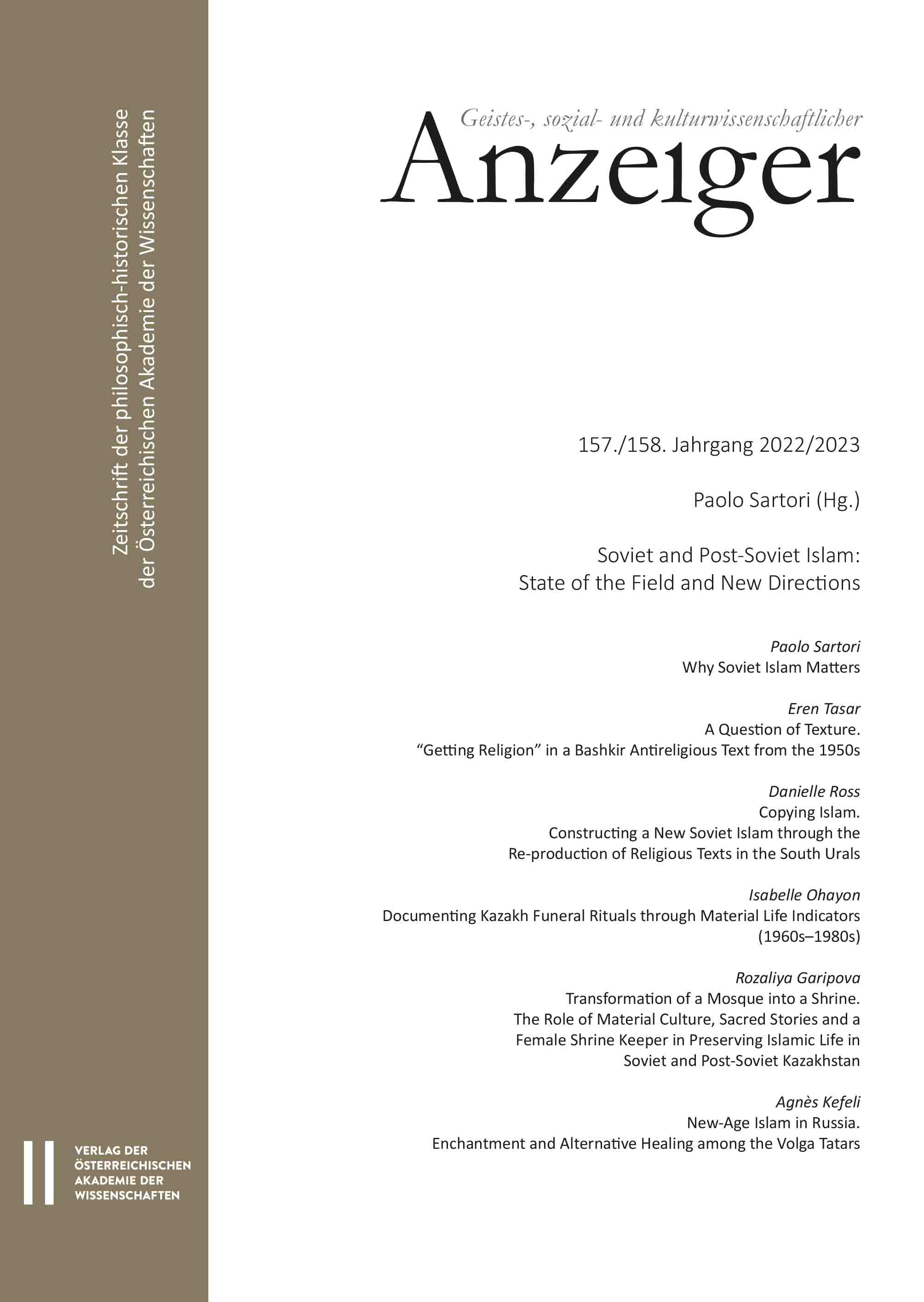
Geistes-, sozial- und kulturwissenschaftlicher Anzeiger, 157. Jahrgang 2022, Heft 1+2, pp. 25-49, 2023/09/21
157. Jahrgang 2022/2023, Heft 1+2

This essay demonstrates that the renaissance experienced in the religious and literary spheres across much of the USSR after World War II influenced the field of scientific atheism as well. Through the prism of a remarkable article that appeared in the flagship Bashkir literary journal Literary Bashqortostan, it argues that a distinct type of antireligious writing, namely Muslim atheism, crystallized during the 1950s, combining the religious and the antireligious. Unlike anti-Islamic writings of the 1920s, this Bashkir piece brings in elements of texture, i. e., documentary and ethnographic snapshots of Muslim life. By extensively quoting Bashkir prayers and folk sayings, it offers an additional window on the history of Islam and atheism in the USSR. Viewing the piece as the product of a dynamic atheism that responded to the decade’s social climate, opens up the possibility of treating atheistic writing in Turkic languages as “religious” texts.
Keywords: Islam, Soviet Union, Bashkir, atheism, literature